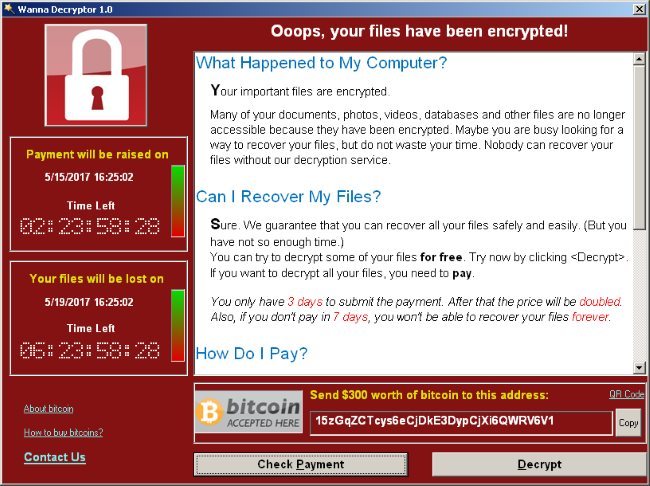A massive ransomware named “Wannacry” have attacked a number of organizations and home users around the world infecting close to 200,000 computers so far in over 150 countries. Ransomware is a type of computer malware that prevents access to one’s electronic data, unless a ransom is paid.
How it looks like?

Symptoms:
- You won’t be able to open files but get error message as "Windows can’t open this file… To open this file, Windows needs to know what program you want to use to open it. Windows can go online to look it up automatically, or you can manually select from a list of programs that are installed on your computer.”
- The most obvious sign that you’re infected with ransomware is a splash screen upon startup that prevents you from using the computer and provides instructions on how to pay the ransom to restore access.
- If any of the files extensions are changed to some unknown, for example .doc changes to .abc
Precautions:
- Never click on a link that you do not trust on a web page or access to Facebook or messaging applications such as WatSab and other applications.
- If you receive a message from your friend with a link, ask him before opening the link to confirm, (infected machines send random messages with links).
- Keep your files backed up regularly and periodically.
- Be aware of fraudulent e-mail messages that use names similar to popular services such as PayePal instead of PayPal or use popular service names without commas or excessive characters.
- Use updated and valid antivirus.
- Make sure your windows have the last update close the gap.
- You should install any and all available security updates immediately.
- Windows users with machines that run Windows XP, Windows 8, or should immediately install this security update.
How to install updates:
- Click Start -Control Panel- programs and Features.
- Click Turn Windows features on or off.
- Install all the updates.
What if you are infected:
Sadly, there is no fix for WannaCry available at this time.
